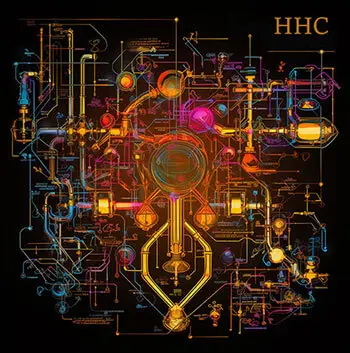Raphael Mechoulam & ECS Endocannabinoid System
| INDEX | |
|---|---|
| Index Article "Raphael Mechoulam & ECS Endocannabinoid System" | |
Before continuing with the article I would like to emphasize that THC is the only illegal cannabinoid in Spain. Today, only those products derived from hemp that contain less than 0.2% THC are allowed. This percentage varies depending on the country, so we recommend that you check it before placing any order.
As we already mentioned in the article “Cannabis: origin, varieties and main cannabinoids ", CBD, is one of the most important and well-known cannabinoids of the cannabis plant today, found in different proportions depending on the strain.
En este artículo abordaremos más en profundidad el CBD y el Sistema Endocannabinoide. ¿Nos acompañas?
How did it all begin?
The first time CBD was described was by a chemist from Israel called Raphael Mechoulam, who has obtained different awards for his studies and research on THC and CBD. Today, he is known as the “father of cannabinoid medicine” .
In the beginning he had the help of his friend Yehiel Gaoni. Together with him he deciphered and detailed the components existing in the cannabis plant.
Although the use of cannabis dates back many years, it was not until 1964 when Raphael Mechoulam , discovers tetrahydrocannabinol (THC), the psychoactive principle of the cannabis plant. In 1992, he found out that THC interacts with the endocannabinoid system (ECS) , the largest receptor system in the human body.
Te recomendamos ver el documental “The Scientist”, una filmación dónde se narra la historia de Raphael Mechoulam y su estudio con los cannabinoides.
If you prefer you can download a summary that we have made of the documentary at the following link:
What is the Endocannabinoid System?
This system is an intercellular mechanism that collaborates with cannabinoids with the aim of achieving homeostasis in the body. That is, its purpose is to achieve metabolic balance in order to achieve the optimization of our body. It achieves all this thanks to the fact that this intercellular system is capable of extending to both the brain and the rest of the organs and tissues.
Through this system, cannabinoids are linked at the cellular level with certain receptor proteins: the CB1 and CB2 receptors of the endocannabinoid system.
CB1 receptor: it is made up of approximately 473 amino acids and is They are located primarily in the central nervous system and in the brain. Although, receptors have also been found, in much smaller quantities, in the immune system and some organs span>. Finally, mention that these receptors are associated with multiple processes such as learning, cognitive and sensory function, pain and anxiety, among others.
Receptor CB2: es afín en un 68% aproximadamente al CB1. A diferencia de este, el CB2 se encuentra en abundancia en el sistema inmunológico. Hay estudios que han demostrado que estos receptores inhiben la respuesta inflamatoria del organismo ayudando a reducir el dolor en el cuerpo.
In conclusion, it is worth mentioning that the ECS affects a multitude of functions in the body such as: energy and metabolic balance, stress, the nervous system, analgesia, sleep, mood, temperature, etc.
What are its therapeutic properties?
Currently, with more or less evidence, the scientific community has discovered the following therapeutic properties:
Medicinally it can be used as: antioxidant, antispasmodic, analgesic, neuroprotective and antitumor.
To combat diseases: anxiety, stress, depression, arthritis, fibromyalgia, chronic pain, inflammatory diseases such as ulcerative colitis and Crohn's.
Palliatively for cases of: chemotherapy, insomnia, nausea, vomiting, physical pain, acne, dermatitis, psoriasis.
Improve neurological disorders and neuropsychiatric diseases: parkinson's, dementia, Alzheimer's, ADHD, PTSD, schizophrenia, autism, anxiolytic, antipsychotic, antiepileptic, alcoholism.
Are there studies on cannabinoids?
It is due to the number of properties that have been detected in cannabinoids, which has led to more and more studies being carried out on the subject.
The study carried out by “anmat – National Administration of Medicines, Food and Medical Technology” concluded that cannabinoids achieved:
Improve chronic neuropathic pain in the short term.
Reduce the dose of opioids.
Discontinue adjuvant therapeutic regimens such as NSAIDs, tricyclic antidepressants, dexamethasone and ondansetron.
Además, anmat realizó el "Informe ultrarrápido de evaluación de tecnología sanitaria” donde se presentaron los resultados obtenidos del uso medicinal de los cannabinoides para el tratamiento del dolor crónico, náuseas y vómitos debidos a la quimioterapia, sida, espasticidad en la esclerosis múltiple, paraplejia, síndrome de Tourette y epilepsia. A modo resumen, el estudio concluyó que los cannabinoides ayudan a:
Relieve chronic pain.
Reduce pain in patients with MS – Multiple Sclerosis.
Reduction of pain associated with HIV-linked distal sensory neuropathy.
Reduction of more than 50% in the frequency of seizures in 47% of patients, with resistant epilepsy, treated with CBD or its association with THC.
Possibly effective after one year in patients with spasticity in multiple sclerosis.
In patients receiving chemotherapy treatment, cannabinoids were four times more effective than placebo in controlling nausea and vomiting.
Improve anxiety and depressive disorders.
If you are interested in the topic, I recommend reading some studies that you can find on the seic website | Spanish Society for Research on Cannabinoids. Below, I leave you some links that I found of great interest.
You can download the article at the following link:






